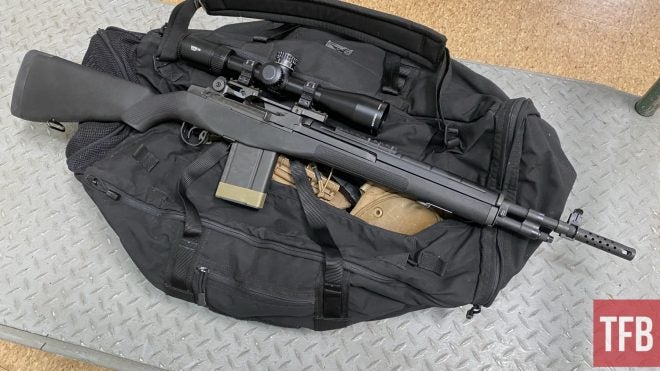When looking at capable 308 battle rifles, it’s hard to ignore the M1A line of rifles. The M1A line has had various models throughout the years, but as a whole, has been a real contender in the 308 market for as long as I can remember. Of course, there are newer AR10 variants that offer easier controls and more capacity, but is the M1A still a real contender in the battle rifle market? When I first purchased the firearm from Springfield Armory, that’s exactly the question I set out to answer. Let’s take a closer look at the Springfield Armory M1A Scout Squad Rifle.
Semi-Auto 308 Rifles @ TFB:
- [SHOT 2022] Zastavas in .308 Win: M77 Semi-Auto and M07-AS Bolt-Action Rifles
- NEW Daniel Defense DD5 308 Short Barrel Rifle
- Dark Storm Industries DS-25 Typhoon Lightweight .308 Win Rifles
- Springfield Tanker vs Saint Victor 308 Pistol – Which Is the Better Ranch Gun?
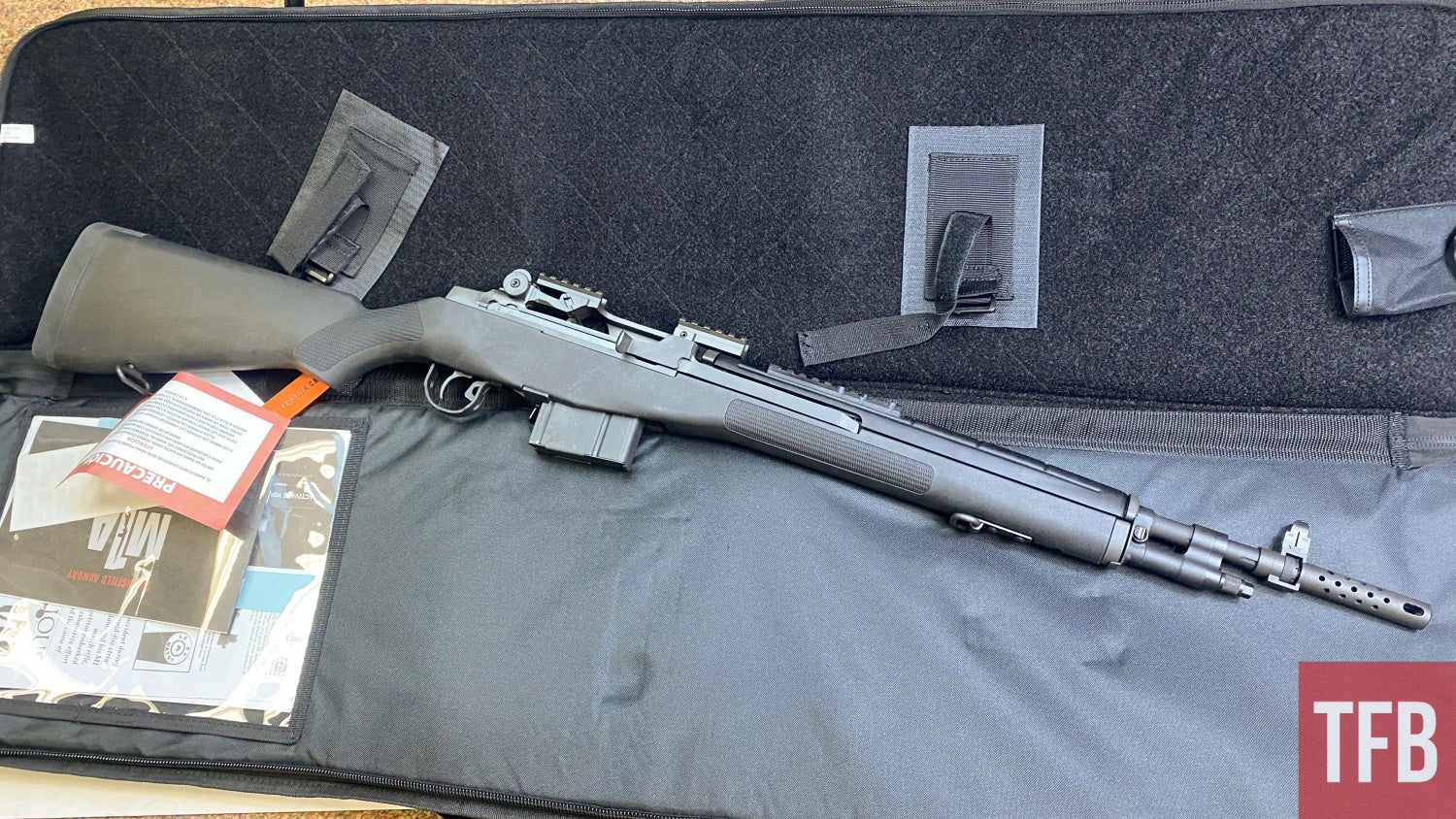
Specs
Springfield Armory offers a number of models of the M1A from the 16-inch Taker models all the way up to the 22″ Loaded models. I decided to go with the 18″ M1A Scout Squad variant for a few reasons. I wanted to test out how handy and lightweight a full 18″ 308 battle rifle could be. When it comes to the Scout Squad, there are a couple variants with either a walnut wood stock or black synthetic stock. I’m rather hard on my guns, so for this review, I decided to go with the black synthetic stock even though it’s not tough to swap stocks If I wanted to down the road.
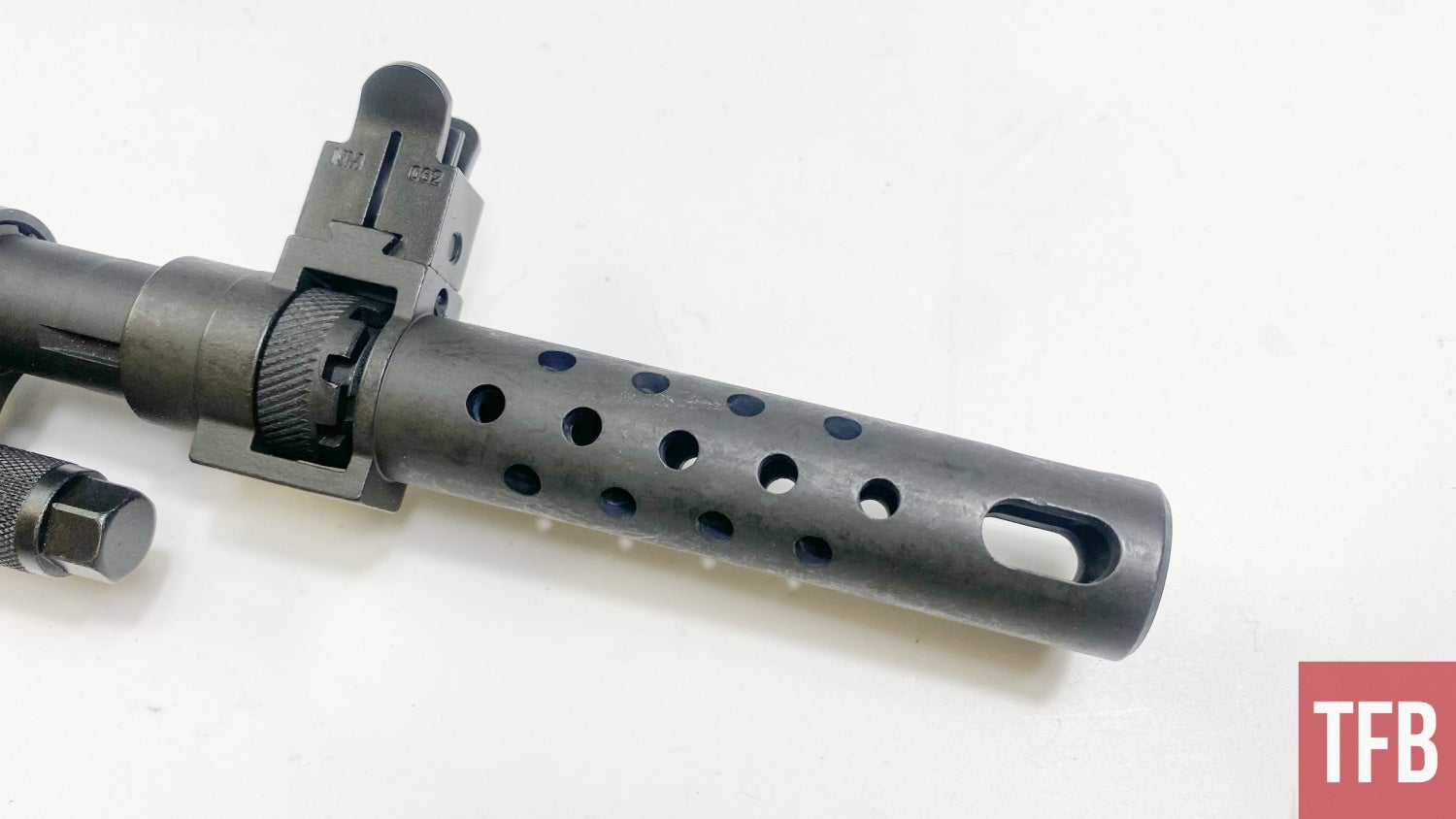
The Scout Squad comes with a 2 stage match trigger that breaks for me around 4.8-5.3lbs that’s standard from Springfield. One feature exclusive to the Scout Squad is Springfield’s M1A muzzle brake. Along with the muzzle brake, the Scout Squad comes with an 18″ 6-groove carbon steel barrel with a 1:11″ twist rate. Overall weight for the Scout Squad is right around 8.8lbs with a National Match front sight and fully adjustable rear sight. For this review, Springfield also installed a 4th gen steel scope mount. MSRP for the synthetic M1A Scout Squad Rifle is $1,883.
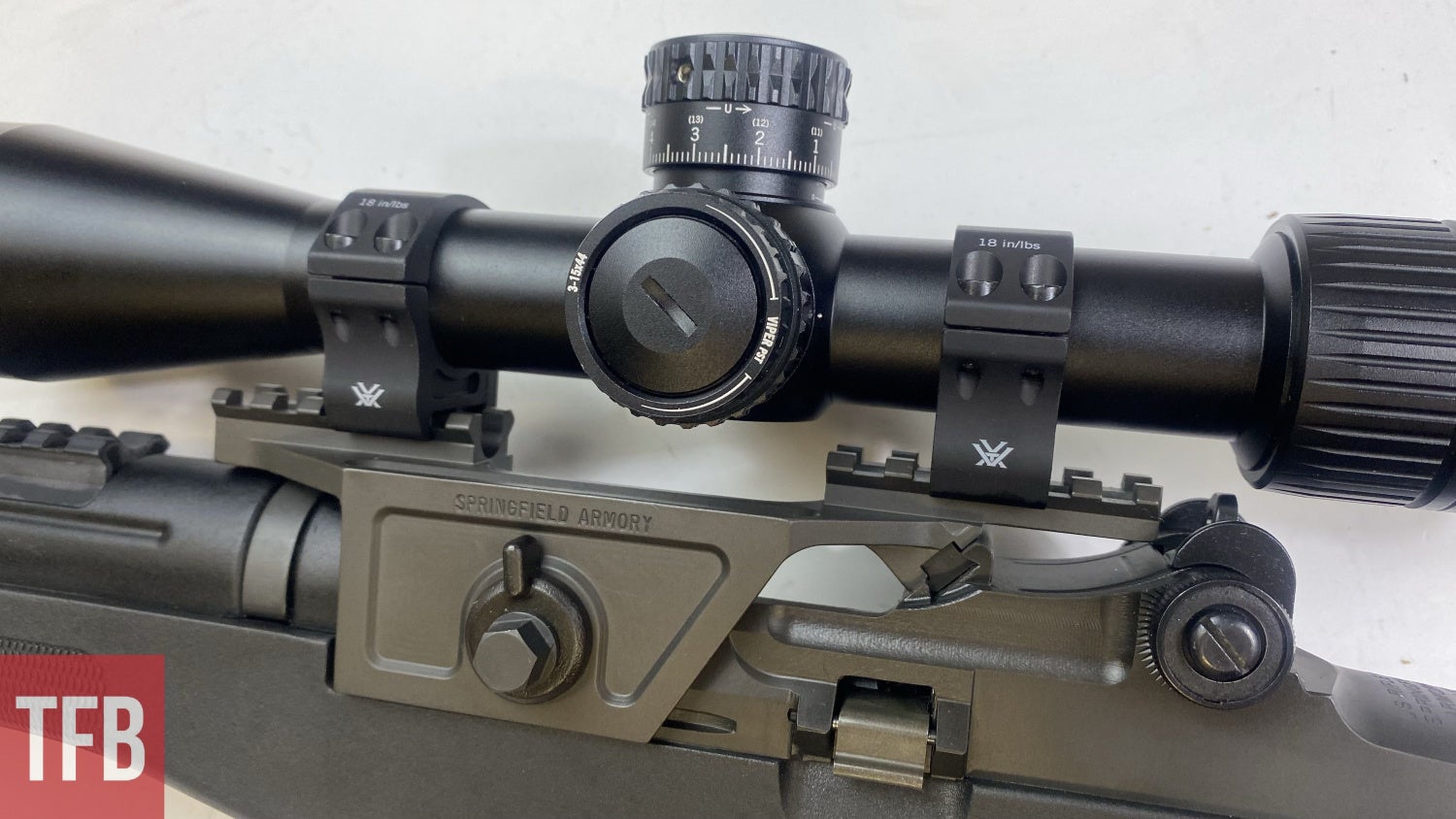
Spec List:
Range Time
For this rifle, I decided to look for a medium-range scope and plan on using shooting bags until I can switch out the front sling swivel to include a mount for a bipod. The steel scope mount really opens up the options for traditional scope. There’s also a front top Picatinny section for a scout-style optic. I decided to get a more traditional style scope since that’s what I prefer. Since I decided to go this route, I made a makeshift cheek riser until I can pick up a McMillan stock. I settled on a Vortex Optics Viper PST GEN II 3-15×44 optic with the EBR-7C MRAD reticle to mount on the Scout Squad for this review.
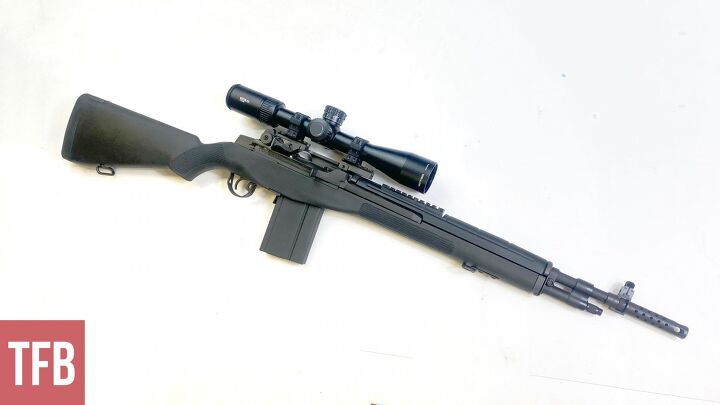
When I sat down and fired the first few rounds, I can truthfully say I completely forgot I was shooting a rifle chambered in 308 Win. The recoil was so soft from this M1A that I was fairly sure I was just shooting another AR-style rifle in a smaller caliber. It wasn’t until I started to really think about it that I truly realized just how soft shooting this variation of the M1A really is. There are a number of differences between this older-style rifle compared to a modern AR-style rifle. Shooting an M1A really does feel like a classic timepiece and just is a completely different experience than shooting a run-of-the-mill AR-style rifle. Throughout the last few months, I have put roughly 950 rounds through the M1A without any failures or hiccups thus far.

Accuracy
For accuracy testing, I picked up a few different 308 match rounds to see how the M1A grouped at 100 and 300 yards. Throughout my testing, I decided to put up two boxes of Federal 175gr Sierra MatchKing Boat Tail Hollow Points along with a box of Hornady 178gr Boat Tail Hollow Points. This particular rifle seemed to like the Federal a bit more with an average group size at 100 yards of 1.25-1.4″. The Hornady 178gr averaged 1.5″ at 100 which is still respectable for an older rifle design. This particular model doesn’t have a match barrel so I was happy with its performance with an out-of-the-box factory barrel.
Trigger and Controls
Like I said earlier, the 2 stage trigger on my M1A is a match-grade trigger that comes standard from Springfield. The 2 stage match trigger has a slight takeup before hitting a defined wall and breaking around 5.5 lbs with a short reset to start the process over again. The safety is located in the trigger guard with a simple push forward to disengage with one finger. Reengaging the safe was a bit tighter but still manageable fairly easily. Loading magazines into the M1A is a fairly simple process of inserting the front of the magazine first and then rocking the magazine back. For the younger crowd, it may be an adjustment from AR-style rifles but it’s fairly easy to master with a bit of practice.

Scout Squad Vs Full Size
When looking at the full-size version compared to the shorter Scout Squad rifle, I was curious how much the muzzle brake cut down on overall recoil compared to its full-size M1A brother. Shooting both rifles side by side, there’s a significant difference in overall felt recoil and muzzle rise. The Scout Squad was drastically softer in terms of recoil and muzzle rise.
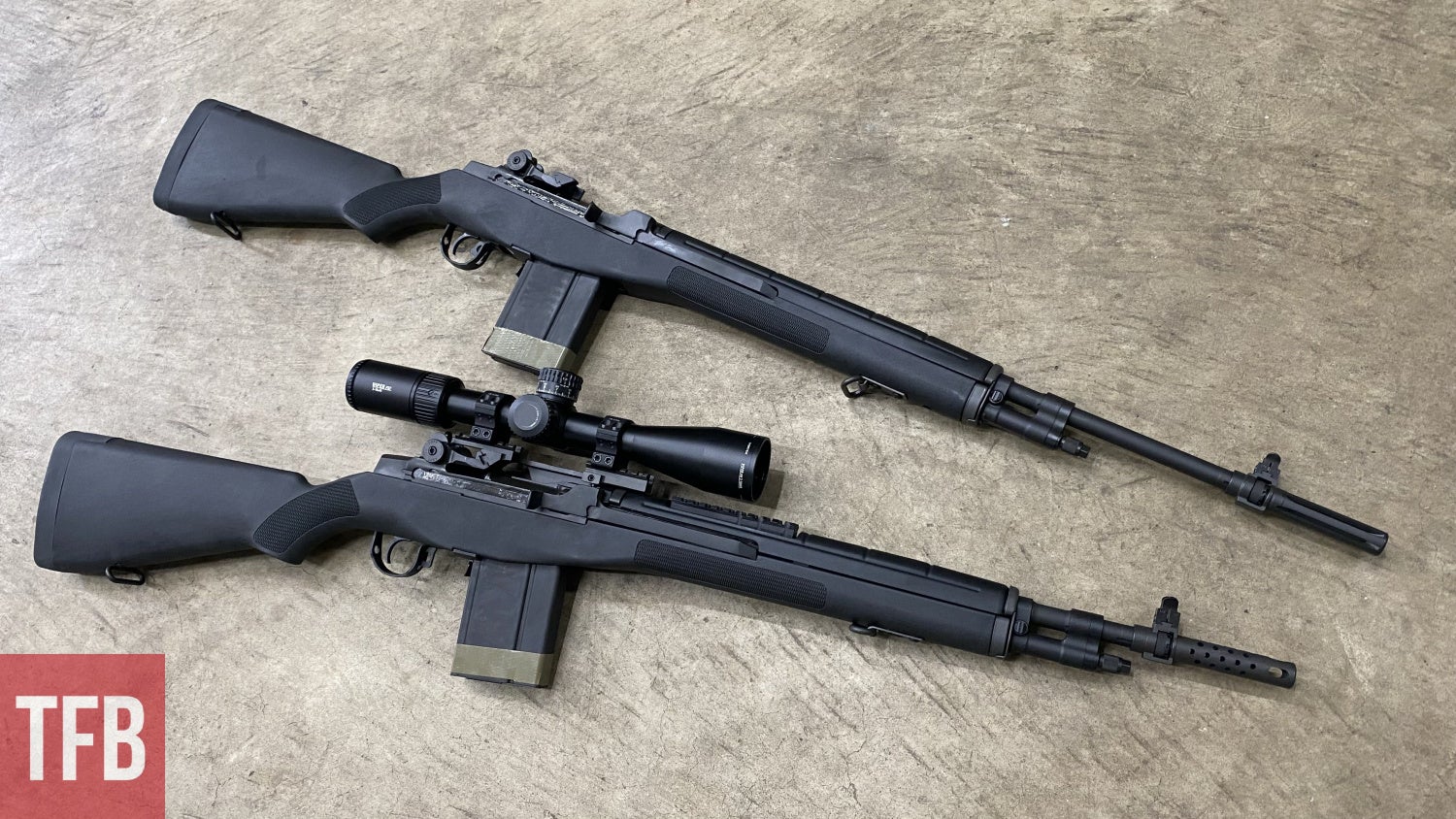
The snap and punch of the 308 round were much less with the muzzle brake than its big brother M1A with the flash hider on it. The level of recoil reduction on the Scout Squad was enough to truly make it feel like a completely different rifle from the standard full-size M1A. Now, I understand, the full-size 22″ M1A has better range and accuracy at distance, but if we are just looking at shooting enjoyment, I really think the Scout Squad is the better route to go.

Overall Thoughts
There’s no denying that the M1A is a classic workhorse that’s been around the block a time or two. It feels like an older system but it’s still extremely effective, especially at range. Some will argue it’s a relic of the past and there are better systems out today for the money. I would argue the M1A Scout Squad rifle is one of the softest shooting 308 battle rifles I’ve ever shot. If you’re looking at one or on the fence about purchasing one, I would say absolutely get one. There’s a ton of aftermarket support for these rifles and it’s just a fantastic option for a mid to long-range semi-auto rifle.
Let me know what you guys think of the M1A and the different variations Springfield Armory makes. Is there a better option in your mind or is the Scout Squad your favorite? Let me know down in the comments below what you think. If you have questions about the Scout Squad or firearms in general, feel free to shoot me a message on Instagram @fridgeoperator. Stay safe out there!
We are committed to finding, researching, and recommending the best products. We earn commissions from purchases you make using the retail links in our product reviews. Learn more about how this works.
 Your Privacy Choices
Your Privacy Choices
